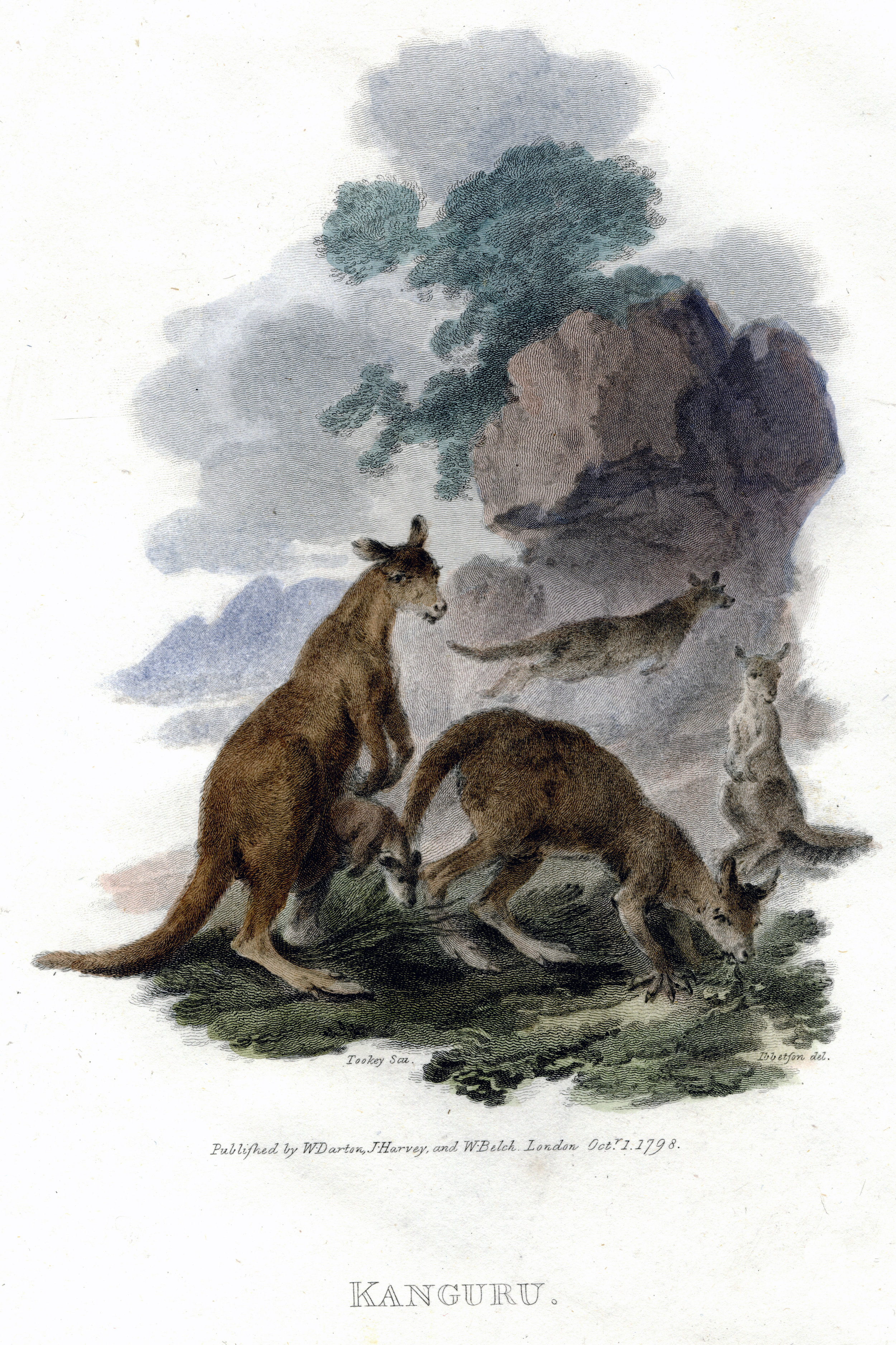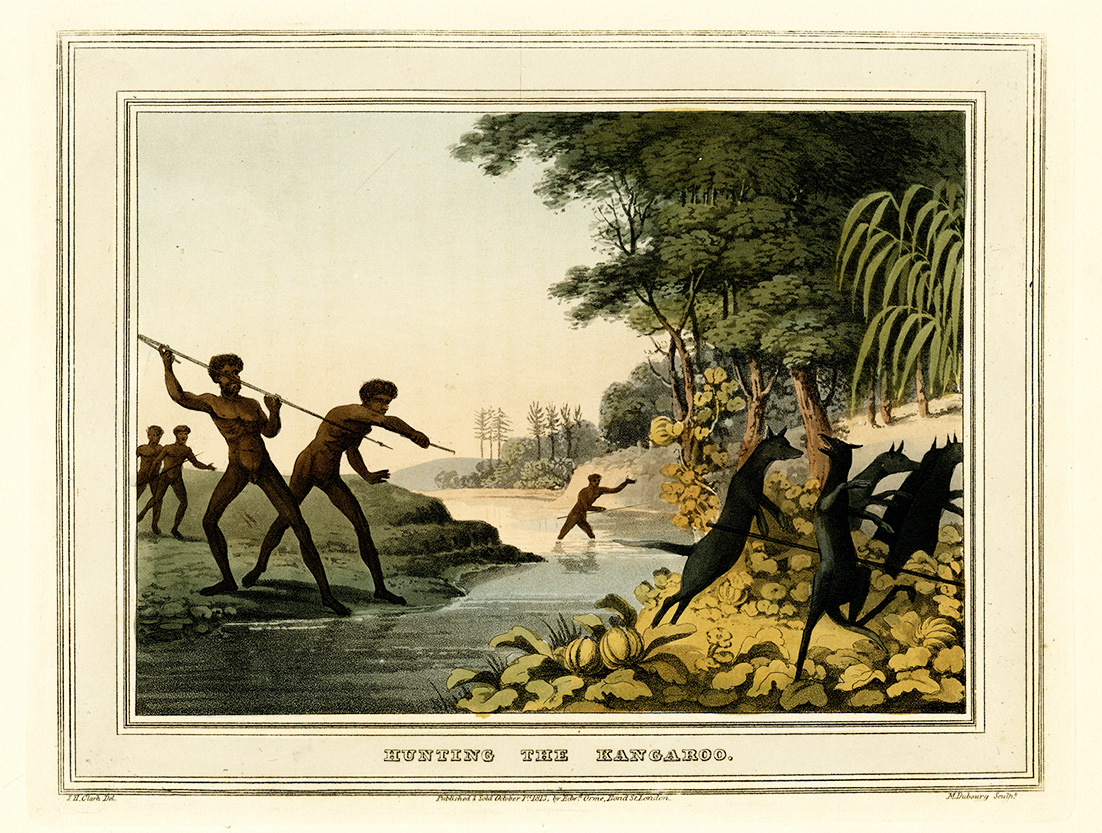KANGAROO
Artists engaged in botanical and zoological illustration face the challenging task of depicting a fictional generic type for an animal or plant species. Since individual members of a species are different—through the unimaginable permutations of potential subtle variations—these artists need to observe a range of the same species to construct their generic type that is as representative of the species as possible. Nowhere is the problem better illustrated than the example of the first depictions of the Australian kangaroo.
When George Stubbs, working in London, was commissioned by Joseph Banks in 1772 to create the first painting of a ‘kongouro’, it might be said he had less than a single animal to work with. Banks had brought back from Cook’s first voyage to New Holland two ‘kanguru’ skins and two skulls, from which a stuffed version was invented for Stubbs to paint from, along with some sketches made from life by Sydney Parkinson. Engravings of the Stubbs kangaroo were simultaneously published in mid-1773 in John Hawkesworth’s edition of the Endeavour journal and in the Gentleman’s Magazine.
The latter is shown in this exhibition, with the engraving appearing opposite descriptive text that leaves the kangaroo as an unnamed new animal species. Of the two publications, the Gentleman’s Magazine was by far the most influential because of its wide distribution. Even when an early colonial settler in Tasmania wore a kangaroo decorated belt buckle, it was the Stubbs kangaroo that was the model, not the real animal, and certainly not any of the thousands of material images created by Aboriginal artists over tens of thousands of years of stone engravings, wall and bark paintings.
The rich and various forms of kangaroo depictions by the different Aboriginal First Nation peoples are well documented in Ronald Younger’s Kangaroo: Images through the Ages, which is still the most comprehensive and inclusive survey of the kangaroo image.[1]
RW
[1] Ronald Younger, Kangaroo: Images through the Ages (Hawthorn, Vic.: Hutchinson, 1988).
Copyright © All rights reserved





![Australian Kangaroo Belt buckle (tongue side) c1800s, in dark bronze,[found in Tasmania] private col.](https://images.squarespace-cdn.com/content/v1/5d0a492836336000012bc86d/1566915792427-GVJR442VEK9FZA0WSRWJ/KangarooBuckle.jpg)